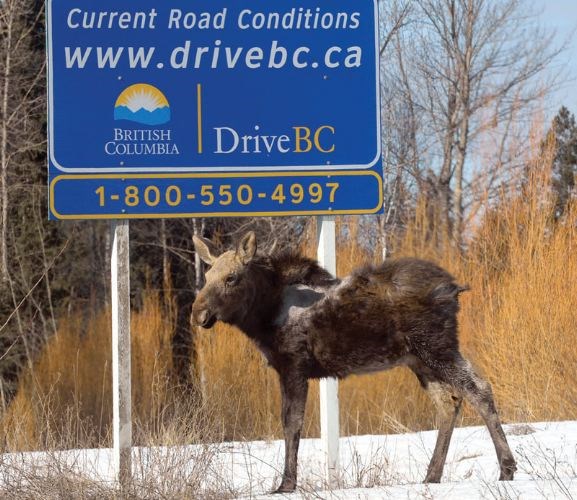Speed limits along northern B.C.'s highways will remain untouched, the B.C. Ministry of Transportation said Wednesday following completion of a review of safety along B.C.'s rural highways.
Conducted last fall and winter, the review included a consultation process that saw a majority of those in the southern part of the province support increased speed limits while those in the northern region were more divided.
Fifty-two per cent indicated they would prefer no change to speed limits while 42 said limits should increase. The remaining six per cent said speed limits should decrease.
In all, 35 sections of highway around the province will see speed limit increases of 10 km/h, the closest to Prince George being a 37-kilometre stretch of Highway 97 North between 70 Mile House and 100 Mile House, where the limit will rise to 110 km/h from the current 100 km/h.
The increased speed limits drew concern from the B.C. Trucking Association, which opposed the move during the review because of "increased crash risk when commercial and passenger vehicles are travelling at different speeds and increased stopping distances at higher speeds, especially in poor road conditions."
With the changes coming, the BCTA urged drivers to drive with care, reduce their speeds in wet and winter conditions, and give commercial vehicles room to operate safely.
Changes are also in store on three other fronts:
Wildlife collisions
Specific locations were not provided but use of flashing LED warning signs will be increased in high crash locations.
Large "gateway signs" warning of the danger will be put up at entrances to highway stretches with the problem and warnings will be posted on the overhead message boards installed around the province as well as on the DriveBC website.
Gayle Hesse, provincial coordinator for the B.C. Conservation Foundation's wildlife collision prevention program called the steps an "excellent start" and noted the LED signs can be programmed to flash during the riskiest periods for collisions.
"They need to be located using a standardized definition of what constitutes a high risk area and I'm assuming the ministry will undergo a systematic review of their data to determine where those signs go," Hesse said.
Hesse was also encouraged by a plan to pilot two wildlife detection systems along Highway Three in the Kootenays from Cranbrook to the Alberta border.
"The technology has reached a stage where it's reliable and we needed a test system in B.C. to see how it's going to work in our jurisdiction," Hesse said.
The consultation found that drivers in northern and central B.C. "felt somewhat more likely to find wildlife to be a safety concern," than those in the south. Hesse saw a connection between that response and the relatively low support for increased speed limits in the northern region.
"People are drawing the obvious conclusion that speed and wildlife collisions are related," Hesse said.
She noted that a large percentage of wildlife collisions in this region are with moose and striking the animals pose serious consequences.
"Because they're so big, there is a significant risk of human injury or death in a moose collision," Hesse said.
Winter tires: The Motor Vehicle Act will be changed to clarify that tires labeled with the "mud and snow," "M and S" or mountain-snowflake symbol are winter tires.
Although the mountain-snowflake symbol is for tires showing at least 10 per cent greater traction than the mud and snow tires, the rating is based on a cumulative score for varied snow conditions and "may not indicate a superior tire for all winter surface conditions," according to a final report for the review.
"With only a 10-per-cent improvement required, a test tire might excel on one surface type but show no difference than an M+S rated tire for another surface but will still achieve the 10 per cent improvement overall.
"That being said, there are mountain-snowflake tires which exceed the standard by substantially more than 10 per cent."
The period for which winter tires are required on high mountain passes will be shortened by a month so it runs from October 1 to March 31, rather than October 1 to April 30. Statistics show a "very low number of winter condition related accidents" in April.
Slower moving vehicles: The Motor Vehicle Act will be amended to "give police better tools, through clearer language, to enforce the requirement for slower vehicles to keep right." New signs and pavement markings will also be introduced to increase voluntary compliance.
On Wednesday, the same day the report was released, the provincial government also said a $1.63 million contract has been awarded to Dawson Construction of Kamloops to design and construct a new southbound passing lane on Highway 5, 55 kilometres south of Valemount near Chappell Creek.
Drivers in all regions were "generally divided" over whether slower-moving vehicles were a safety concern, according to the consultation.


